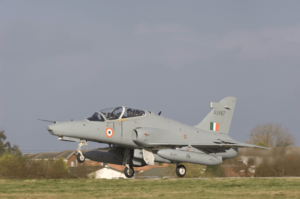Airfoils have played an important role for humans to fly. Let’s understand the science behind them.
Airfoil or Aerofoil is the cross-section shape of a wing, propeller blade, etc. It has many applications because of its Aerodynamic shape and properties. When an Airfoil shaped body is moved through a fluid, it generates a lift force perpendicular to the direction of the motion of the object and a force, parallel to the direction of motion of the object, known as Darg.

How Airofoil generates lift?
There are many arguments and theories on how airfoils generate lift among the people over the internet but many of them are incorrect.
Lift is generated through a simple concept of Bernoulli’s Theorem. When an airfoil is moving in the air, due to its curved shape, a pressure difference accompanied by a velocity difference is generated between the upper surface and the lower surface. The pressure on the upper surface is lower and higher on the lower surface and as we know from Bernoulli’s theorem that pressure moves from higher to lower region, thus resulting in the generation of the lift.
Let’s understand some terminology and geometry of the Airfoil:
Surfaces
- The upper surface of an Airfoil is generally with a higher velocity and low static pressure.
- The lower surface of an Airfoil is generally with lower velocity and high static pressure compared to the upper surface.

The mean camber line – The line joining the locus of points midway between the lower and upper surfaces of an airfoil is known as the mean camber line.
The Leading-edge – The front most point of the mean camber line is known as the leading edge.
The trailing edge – The rear endpoint of the mean camber line is known as the trailing edge.
The chord line – The straight line joining the leading and trailing edges of the airfoil is known as the chord line.
Camber – The maximum distance between the chord line and the mean camber line and measured perpendicular to the chord line is known as Camber.
Thickness – The distance between the lower and the upper surfaces and also measured perpendicular to the chord line is known as thickness.
The angle of Attack (α) – The angle between the chord line of the airfoil and relative wind direction.
There are numerous designs of airfoils that are used in various aircraft for different purposes. Generally, most of the airfoil requires a positive angle of attack to generate lift, but the asymmetrical airfoil can generate lift at a zero angle of attack.
* The information provided herein is, to the best of our knowledge and is only for informative purpose. If you have a news update or correction, let us know at -info@garudauniverse.com




